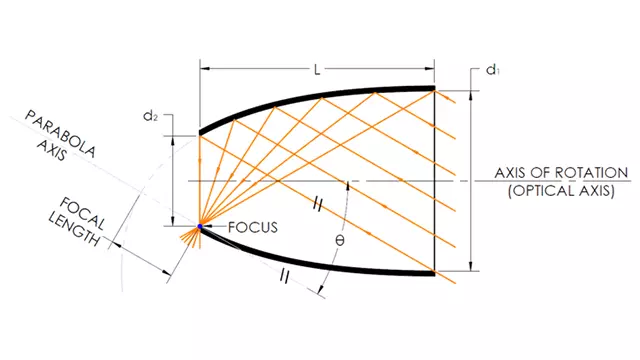CPC Essentials
Design Considerations for Compound Parabolic Concentrators

Free CPC Design Guide
Learn About:
- Facilitating the CPC Design Process
- Design Parameters, Capabilities, & Limitations
- Preferred Manufacturing Process
The intent of this publication is to provide a baseline analytical understanding of Compound Parabolic Concentrators to facilitate the design process for an applicable optical system. The reader should expect to acquire working knowledge of the function, design parameters, capabilities, and limitations of this type of optical device.
Compound Parabolic Concentrators Channel Light Energy
A Compound Parabolic Concentrator (CPC) is a reflective, non-imaging optical device which employs specifically configured parabolic properties to take advantage of the maximum concentration of light energy.
CPCs are designed using a rotated parabolic shape. The wide end of the CPC collects divergent light which is then reflected in the CPC and concentrated at the narrow output end. CPCs are defined using an acceptance angle which is the angular range in which the CPC can collect light.
How Compound Parabolic Concentrators Solve Problems
A challenging problem among optical system designers is that of concentrating or “funneling” light from a large area input to a small area output. There are many ways to accomplish this using lenses or reflectors depending on the requisite precision and system parameters. In cases where maximum concentration is desired, a Compound Parabolic Concentrator (CPC) is the most effective option.
Electroformed Compound Parabolic Concentrators
There are two common varieties of Compound Parabolic Concentrators, solid and hollow. Although the manufacturing process differs greatly, both variants function in the same way, using the same principles.
Need a Compound Parabolic Concentrator?
Find standard products and more technical information about our electroformed CPCs.
Download CPC Essentials
Design Considerations for Compound Parabolic Concentrators
By Joseph Haring & Natalie Pastuszka

Please complete the form to download PDF

